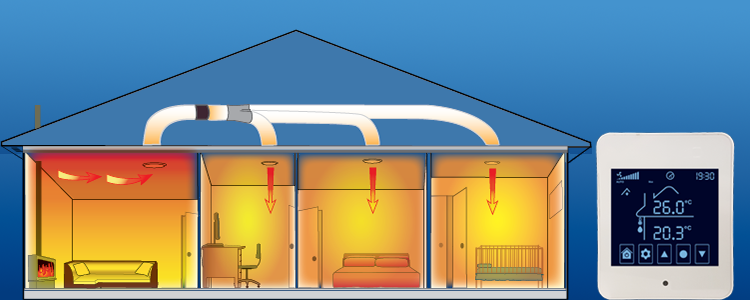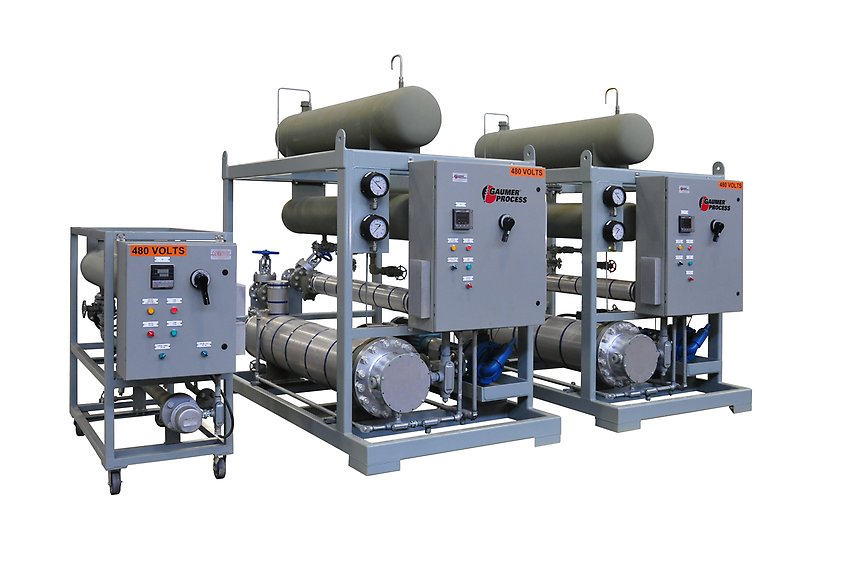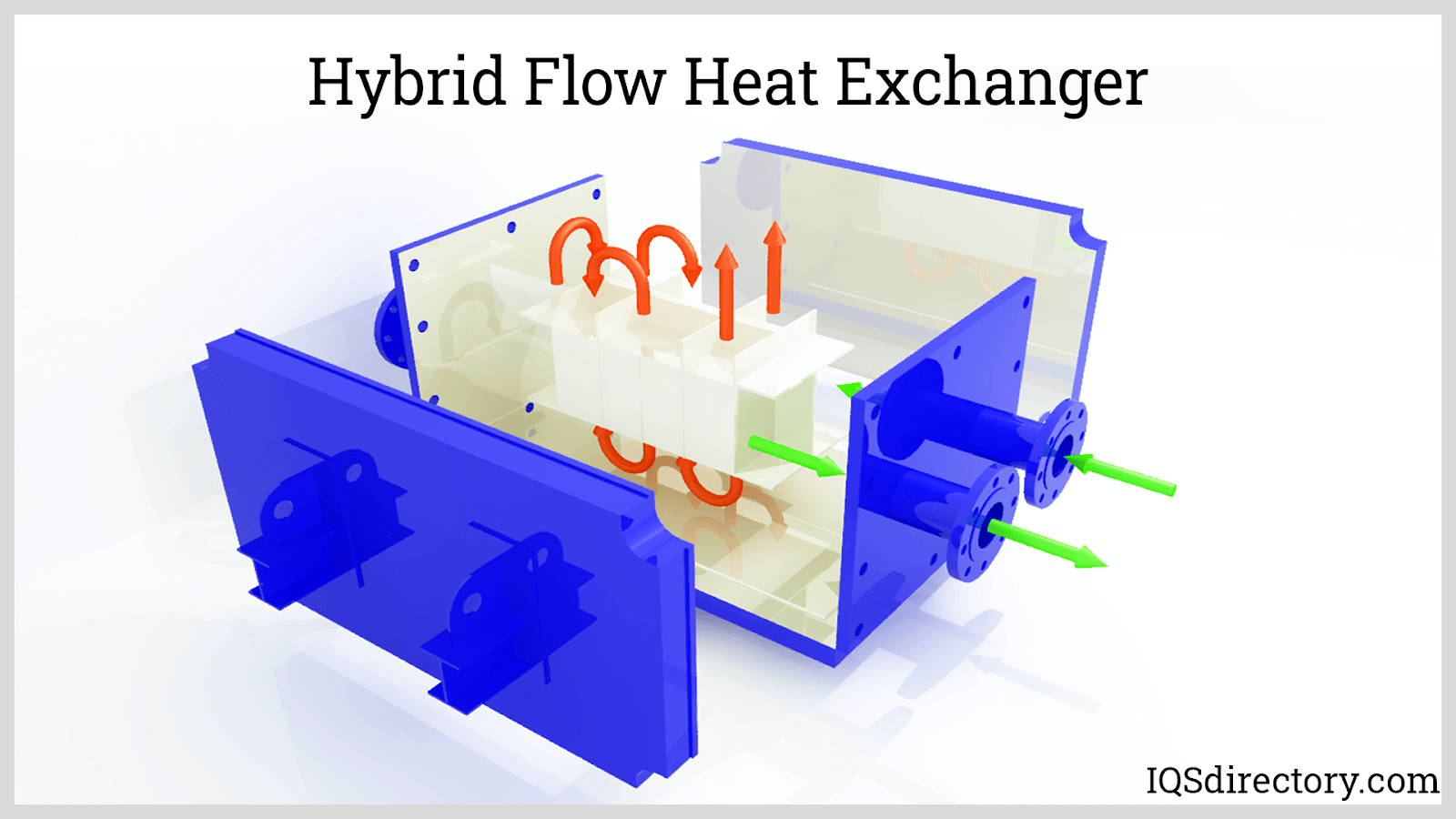Are DVS Heat Transfer Systems Designed for High-Performance Electronics Cooling?
The Role of Heat Transfer Solutions in Sustainable Power Solutions for the Future
Heat transfer systems are vital in the mission for sustainable power services. They maximize thermal power management, boosting the performance of sustainable innovations. By using systems like radiation, conduction, and convection, these systems reduce energy losses. Their role in solar thermal and geothermal applications is specifically significant. As advancements emerge, the potential for more developments increases essential inquiries concerning future power strategies. What developments will form the landscape of lasting energy?
Comprehending Heat Transfer Solutions

The Significance of Thermal Power Administration
Efficient thermal power monitoring is essential for optimizing power efficiency and lessening waste in different systems. By managing temperature level and maximizing Heat transfer processes, companies can significantly minimize power consumption and functional expenses. Reliable monitoring includes the implementation of advanced technologies and techniques that monitor and manage thermal conditions within systems, guaranteeing that energy sources are made use of effectively. On top of that, proper thermal energy administration adds to decreasing greenhouse gas emissions, aligning with worldwide sustainability objectives. It additionally enhances system integrity and performance, causing improved item high quality and longer devices lifespan. Eventually, focusing on thermal power management is an important step in the direction of developing a lot more lasting energy remedies and cultivating a responsible technique to power intake in industrial and residential contexts.
Applications of Heat Transfer in Renewable Energy
While different renewable resource resources guarantee sustainability, the efficient application of Heat transfer plays an important duty in their effectiveness. In wind power systems, Heat transfer is used for generator part air conditioning, improving efficiency and longevity. Geothermal power counts on reliable Heat exchange between the planet's subsurface and the liquid flowing in the system, making best use of energy removal. Biomass energy processes additionally take advantage of Heat transfer, as it assists in transforming organic products right into functional gas through pyrolysis and gasification. Additionally, in hydropower, maintaining suitable temperature levels in tanks can improve power outcome. Each of these applications demonstrates the vital importance of Heat transfer systems in boosting renewable resource innovations, ultimately adding to a more sustainable energy future.
Enhancing Solar Thermal Power Effectiveness
As solar thermal power systems proceed to develop, boosting their efficiency has ended up being essential for maximizing energy outcome. Advances in Heat transfer modern technologies, such as enhanced thermal storage products and innovative Heat exchangers, play a substantial role in improving performance. By using advanced products that have superior thermal conductivity, systems can transfer and capture Heat much more successfully. In addition, integrating monitoring systems that comply with the sunlight's course assurances that enthusiasts get ideal solar exposure throughout the day. Making use of nanotechnology in solar absorbers can additionally raise energy absorption rates. Incorporating automated control systems helps handle and control temperature levels energy circulation effectively, leading to lowered losses and improved overall system efficiency. These enhancements lead the way for more lasting solar thermal energy solutions in the future.
Geothermal Home Heating: A Sustainable Option
Geothermal home heating presents a sensible alternative for sustainable energy, supplying substantial ecological benefits via lowered greenhouse gas exhausts. Its performance and cost-effectiveness make it an eye-catching alternative to traditional heater. Difficulties related to execution should be addressed to maximize its prospective impact.
Environmental Benefits of Geothermal
Typical home heating approaches contribute significantly to greenhouse gas discharges, geothermal home heating offers a compelling choice that lessens ecological impact. By utilizing the Earth's internal Heat, geothermal systems utilize a renewable resource source, markedly decreasing dependence on fossil fuels. This method generates minimal carbon exhausts, making it a cleaner choice for residential and industrial home heating. In addition, geothermal systems promote energy effectiveness, as they need less energy contrasted to standard heater. DVS Heat Transfer Systems. The usage of geothermal power likewise assists in decreasing air pollution, improving local air top quality and public health and wellness. As a sustainable solution, geothermal home heating sustains environment adjustment reduction initiatives, positioning itself as a necessary component in the shift towards a greener future
Performance and Cost-Effectiveness
Exactly how does geothermal heating determine up in regards to performance and cost-effectiveness contrasted to conventional heating unit? Geothermal heating demonstrates premium effectiveness, typically achieving a coefficient of performance (POLICE) of 3 to 5, indicating it generates three to five devices of Heat for every single system of electrical energy consumed. This efficiency translates into lower operating expense, particularly in regions with stable geothermal resources. Preliminary setup expenses can be more than traditional systems; however, long-lasting savings on power expenses and minimized maintenance expenses can counter these in advance financial investments. In addition, many governments incentivize geothermal systems through rebates and tax obligation credit histories, enhancing their cost-effectiveness. On the whole, geothermal heating arises as a lasting and financially sensible option to even more traditional home heating options.
Application Difficulties and Solutions
Numerous challenges can impede the widespread execution of geothermal home heating systems, despite their clear benefits as a sustainable power service. High preliminary setup costs often prevent house owners and capitalists, making financing a significant barrier. Additionally, the geographical constraints of suitable geothermal sites restrict access in particular regions. Regional guidelines and permitting processes can also complicate job advancement, resulting in delays. Public recognition and understanding of geothermal systems stay low, hindering acceptance. To resolve these difficulties, targeted education campaigns can enhance public understanding, while government motivations can minimize economic burdens. Working together with regional authorities to improve guidelines might facilitate smoother task approvals, inevitably advertising the adoption of geothermal home heating as a viable, sustainable power alternative.
Technologies in Heat Transfer Technologies
Developments in Heat transfer innovations play a vital function in enhancing power performance and sustainability. Advanced Heat exchangers and phase modification materials go to the leading edge of these advancements, offering substantial improvements in thermal monitoring. These innovations not just optimize energy use yet additionally add to lowering environmental influence in various applications.
Advanced Heat Exchangers
Advanced Heat exchangers play an essential function in improving energy efficiency across numerous applications in lasting power services. These tools facilitate the transfer of Heat between two or even more liquids, substantially decreasing power usage in procedures such as commercial heating, air conditioning, and power generation. Innovations in products and style, such as using nanofluids and small setups, have caused improved thermal performance and minimized dimension requirements. Additionally, innovations in electronic monitoring and control systems permit enhanced procedure, additional enhancing efficiency. By lessening waste Heat and optimizing energy recovery, progressed Heat exchangers contribute to lower carbon impacts and sustain the shift towards eco-friendly technologies. Their continued growth is crucial for attaining international energy sustainability goals.
Stage Change Materials
The combination of stage change materials (PCMs) into Heat transfer technologies stands for a considerable development in power management and effectiveness. PCMs absorb and release thermal energy throughout their phase changes, making it possible for efficient temperature level regulation in building products and energy systems. By keeping excess Heat during height periods and launching it when demand increases, PCMs add to load changing and power preservation - DVS Heat Transfer Systems. This ability improves the efficiency of renewable resource systems, especially in solar thermal applications. Furthermore, PCMs can enhance the thermal comfort of interior settings, decreasing reliance on standard home heating and cooling approaches. As technologies in PCM formulations remain to arise, their role in lasting power options is positioned to grow, using promising methods for future study and application

Future Potential Customers for Heat Transfer in Lasting Power
As the need for sustainable energy services proceeds to increase, the function of Heat transfer systems is coming to be progressively important in forming future modern technologies. Developments in materials and layouts are anticipated to enhance performance in Heat transfer, decreasing energy losses in various applications. The assimilation of advanced thermal storage space systems, such as stage adjustment products and thermochemical storage space, will certainly DVS Heat Transfer Systems enable far better management of power resources. Study into nanofluids and biomimetic Heat exchangers might even more enhance thermal performance. Moreover, the adoption of clever modern technologies will certainly enable for real-time surveillance and adaptive control of Heat transfer procedures. These advancements are poised to significantly add to the general effectiveness and sustainability of energy systems, leading the way for a much more energy-efficient future.
Regularly Asked Inquiries
Exactly How Can Individuals Apply Heat Transfer Solution at Home?

Individuals can implement Heat transfer systems in your home by mounting energy-efficient appliances, making use of radiant heat, and optimizing insulation. These actions enhance power efficiency, reduce expenses, and promote sustainable methods in household atmospheres.

What Are the Prices Connected With Installing Heat Transfer Equipments?
The prices related to installing Heat transfer systems vary commonly, usually incorporating tools, installment labor, and upkeep. Aspects such as system kind, home dimension, and local policies considerably influence the total expenditure involved.
Exist Federal Government Rewards for Heat Transfer System Installations?
Government incentives for Heat transfer system installations vary by region and can include tax credit scores, rebates, and gives. These financial advantages aim to urge adoption, eventually advertising power efficiency and lowering ecological impact within communities.
Just How Do Heat Transfer Solutions Impact Power Costs?
Heat transfer systems especially influence power expenses by maximizing energy effectiveness. By boosting the transfer of Heat, these systems lower energy consumption, leading to reduced utility costs and developing an extra sustainable method to energy administration.
What Maintenance Is Needed for Heat Transfer Equipments?
Upkeep for Heat transfer systems consists of normal assessments, cleaning of parts, checking fluid levels, ensuring appropriate insulation, and changing used components. These jobs help preserve efficiency, prevent breakdowns, and lengthen the system's functional life expectancy.
These systems promote the activity of thermal power from one tool to one more, allowing the transfer of Heat for air conditioning, energy, or heating generation functions. Geothermal energy relies on reliable Heat exchange between the planet's subsurface and the fluid distributing in the system, making the most of energy extraction. In addition, geothermal systems advertise power efficiency, as they call for less power compared to traditional heating systems. Advanced Heat exchangers play an important duty in boosting power performance throughout various applications in lasting energy options. Heat transfer systems especially influence power bills by maximizing power effectiveness.